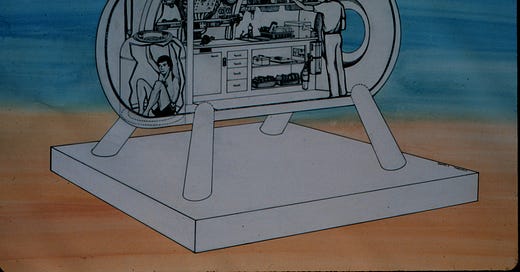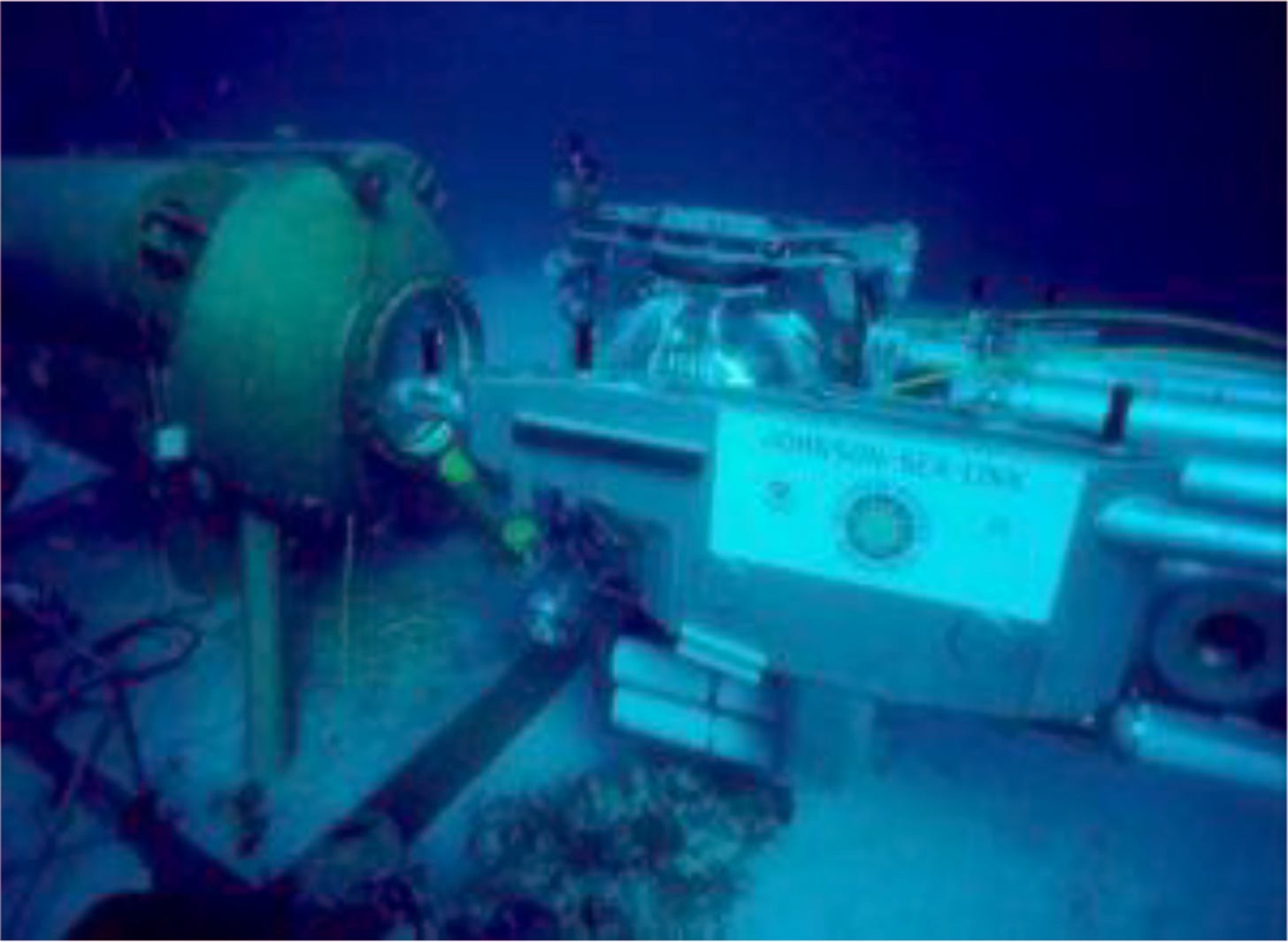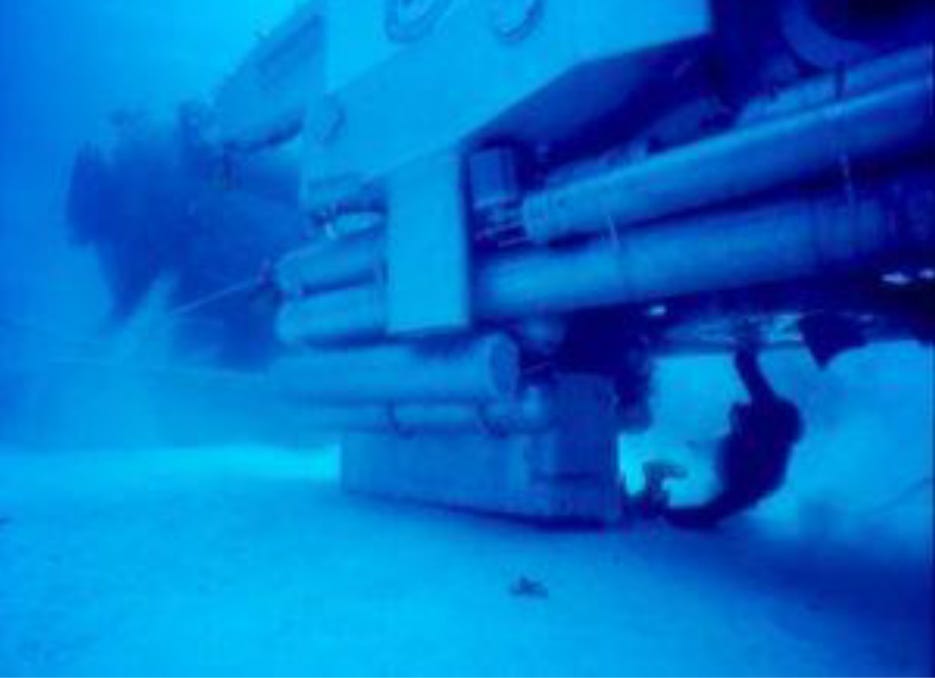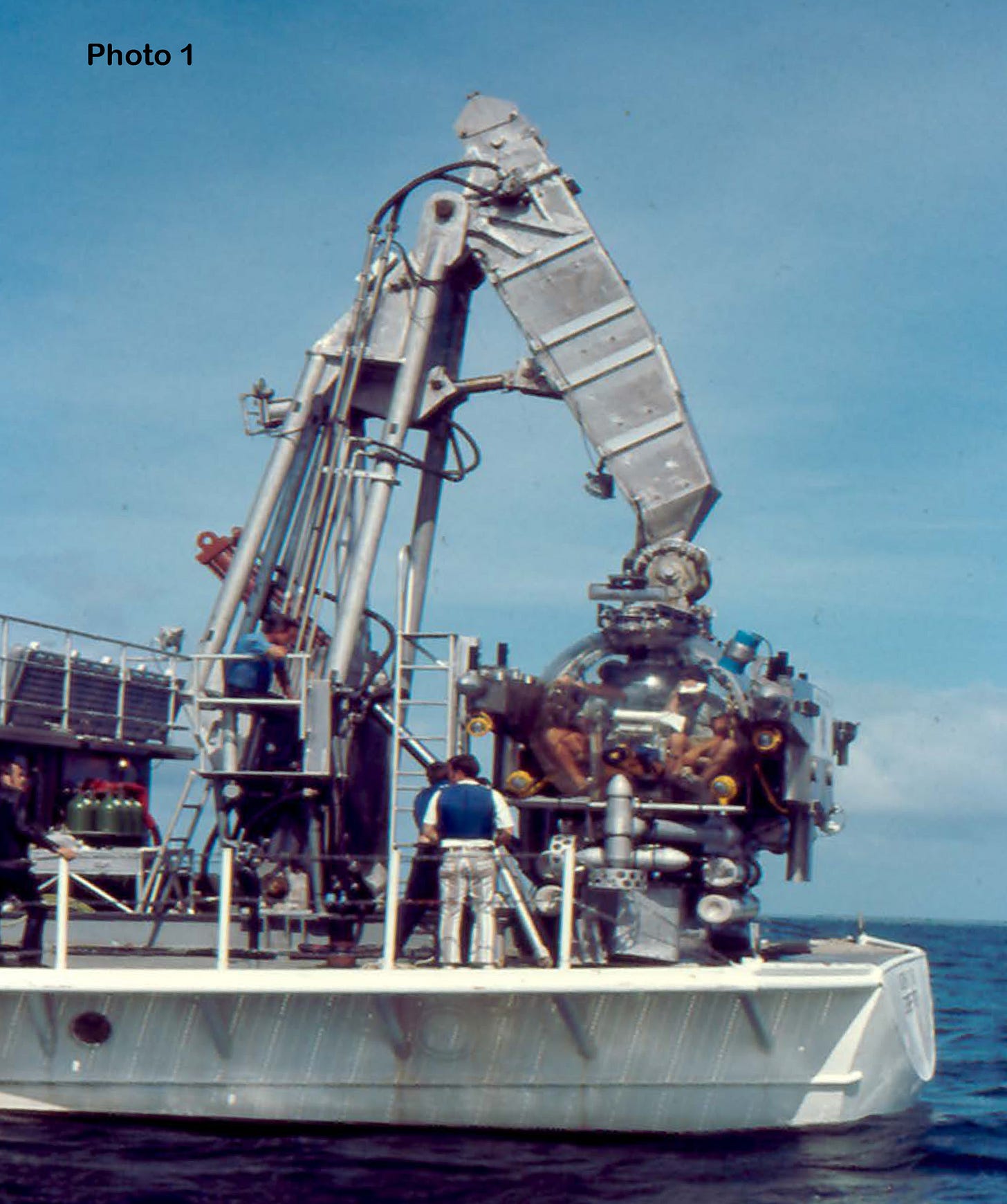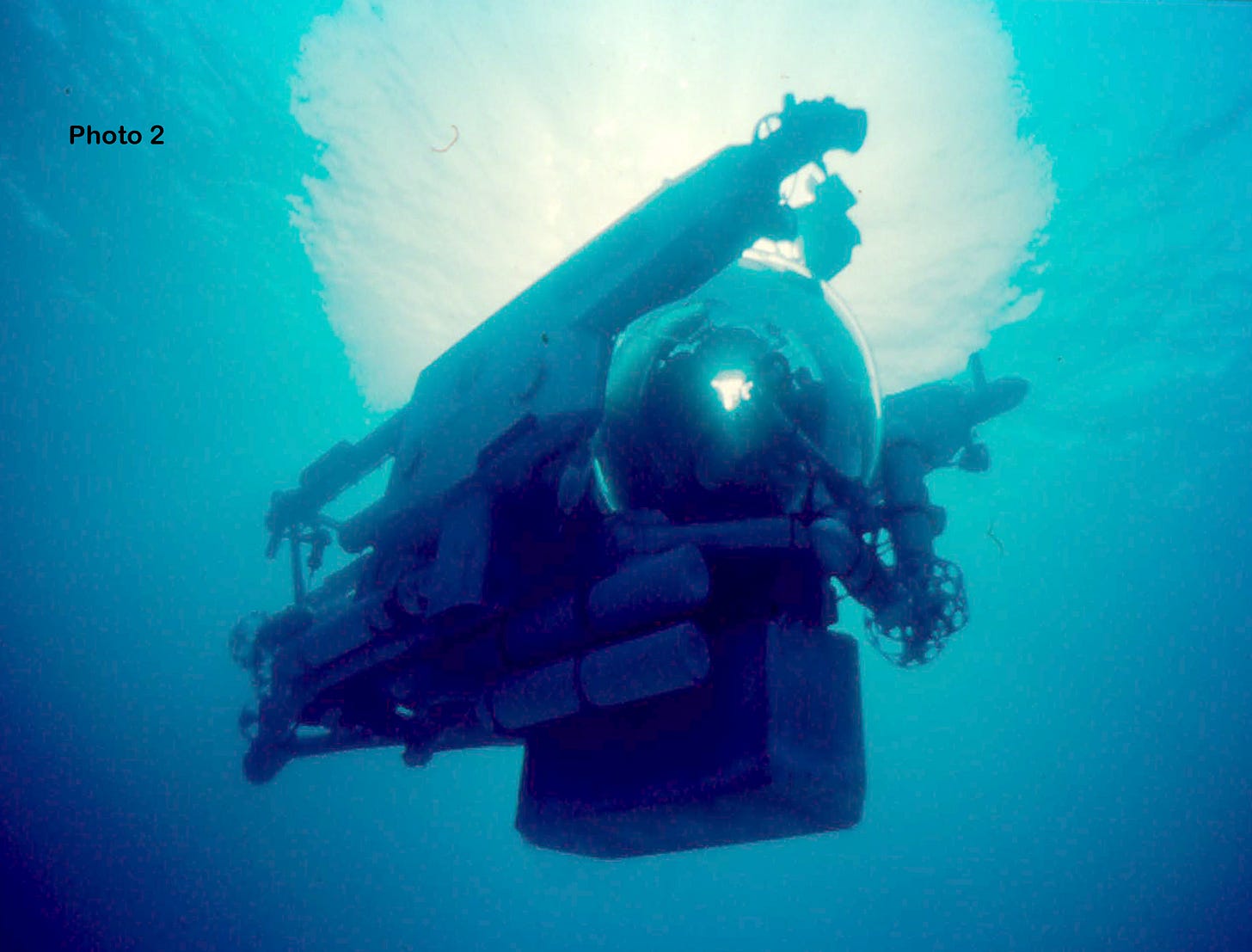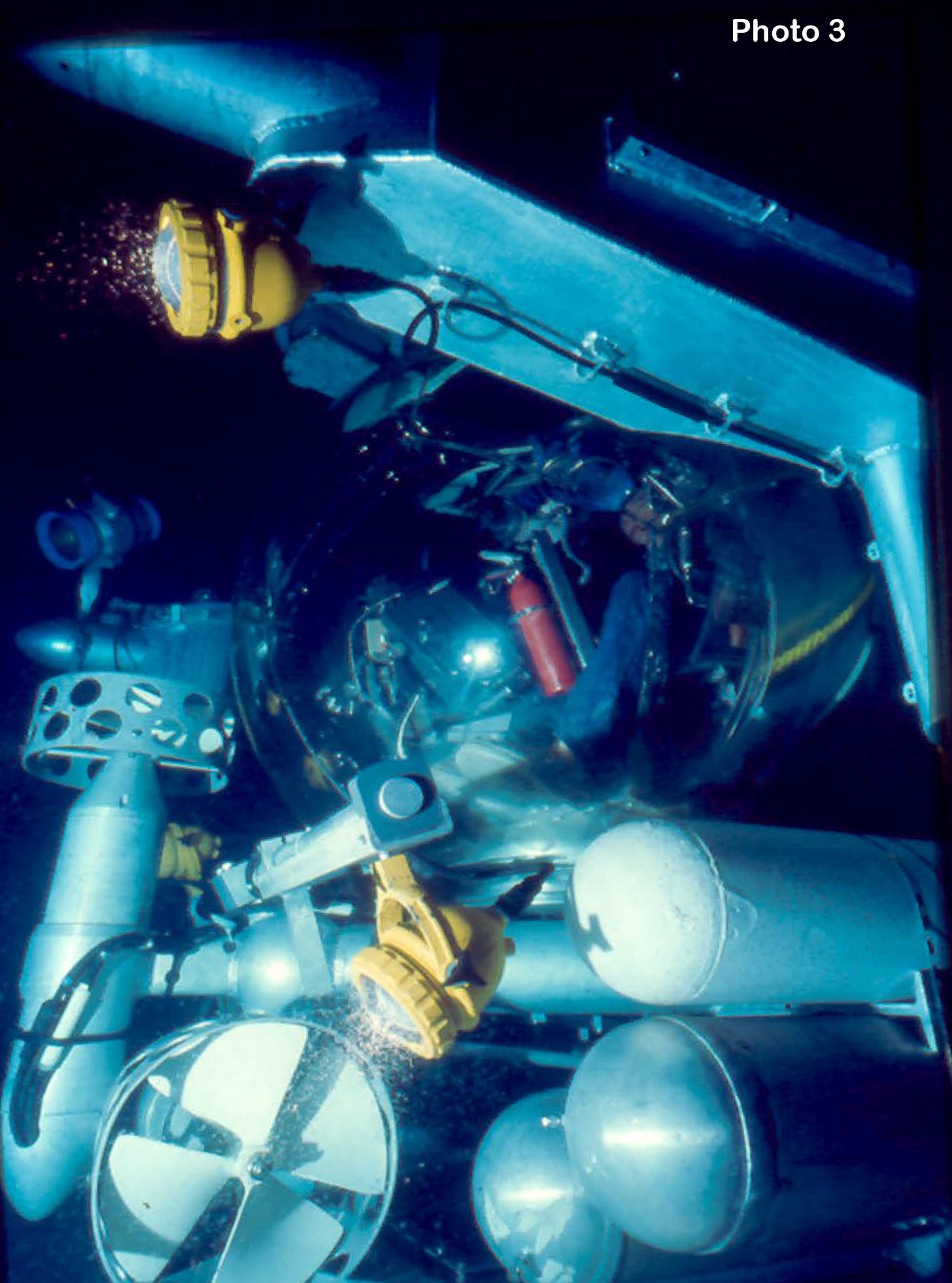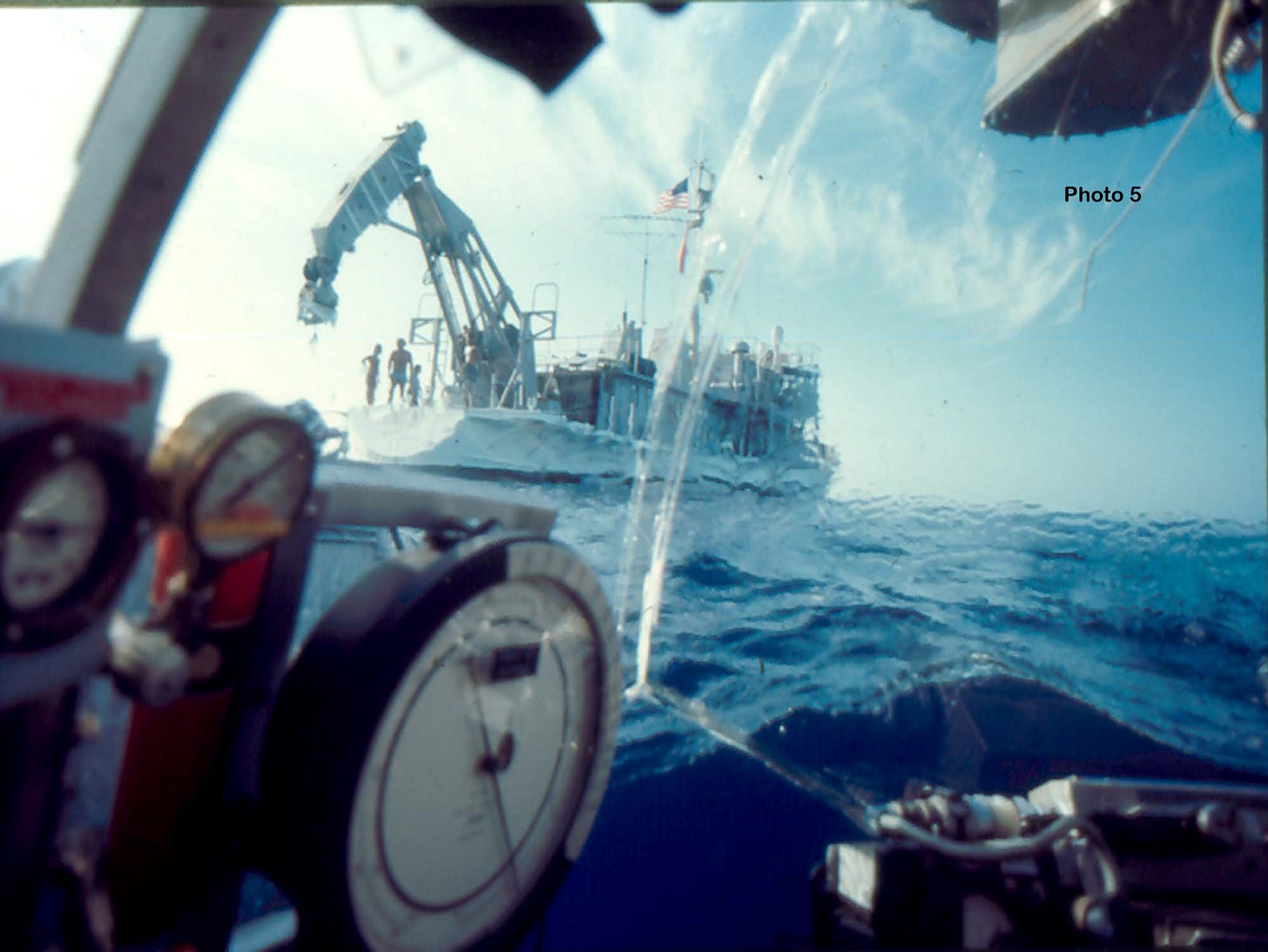Back in November, I wrote a couple essays about efforts to live underwater and expand our knowledge of saturation diving. You can read some of that here.
A diver who enters the water and plans to return to the surface at the end of the dive, their body absorbs nitrogen at a pace based on their depth, time and breathing gases. The diver must surface at predetermined rates, allowing the nitrogen to leave their body (off gas) slowly enough that it doesn’t cause problems — decompression sickness.
Eventually, though, if the diver were to stay at depth, the nitrogen in their body would equalize with the surrounding pressure. At that point, the diver could stay there as long as they wanted without any additional risk. Their bodies are saturated. It is the basis for programs like Conshelf and Deep as well as many commercial diving operations.
Recently, a man I greatly respect, Dick Clarke, the president of the National Board of Diving and Hyperbaric Medical Technology, shared a story that I was unaware of. On the 50th anniversary of the experimental dives he made, Clarke introduced me and some of his other followers to Hydrolab.
Hydrolab was a mobile underwater research habitat owned by Perry Oceanographics, Inc.. NOAA operated it from 1970 to 1985, according to the NOAA website. The vessel was designed for two-week missions with up to four inhabitants. The surface support ships could move it around between missions to study new areas.
The work Clarke and his dive buddy did developed the earliest protocols to begin at saturation, dive even deeper, and then return safely to the saturation depth.
I’ll let Dick explain it from here. (Posted with his permission.)
To close out this year’s Briefings, I’ll digress from the usual content and describe an historic dive that took place 50 years ago this month. It was the first downward excursion from saturation storage that, due to its depth and bottom time, required staged decompression stops to return safely to the original saturation depth at the Hydrolab.
In fact, it was so unique that few such excursion dives have occurred since. It took place from Hydrolab, a seabed habitat located off the southern shore of Grand Bahama Island some 1,500’ from the beginning of the continental shelf “drop off.”
My buddy Bob Wicklund and I had spent several years living in and working from Hydrolab and supporting visiting scientists. Over several days prior to this particular saturation, we made a series of 200 fsw surface-orientated air dives to establish experimental stations we would use during the upcoming excursions.
They went well despite having to accommodate for nitrogen narcosis and after a two day pause, we entered Hydrolab with an air storage depth of 44-47 fsw (3.5 fsw tidal range).
Some 24 hours later we began the excursion dive. It first involved swimming out horizontally while maintaining 47 fsw (so “bottom time” not yet starting) then a direct descent once over the edge of the drop-off. After a 60-minute bottom time at 200 fsw we began our return, with extra air cylinders available along the way. Once back inside Hydrolab we Doppler monitored ourselves for venous gas embolism, with none detected.
While this was all quite unique there was another unique dimension. Both of us had blurted out how much more alert we seemed to be and with greater peripheral vision while at 200 fsw compared to the surface-oriented dives. It was as if we were breathing heliox given the apparent absence of narcosis.
Being convinced we were adapting to elevated nitrogen pressures we shared this observation with Dr. David Youngblood, Hydrolab’s illustrious medical director, who, in turn, shared it with Dr. Peter Bennett, the preeminent ultradeep diving scientist. Peter was wholly unconvinced, “a ridiculous assertion!”
Following our protestations to the contrary Peter agreed to put our observation to the test. To do so we recruited the Johnson Sea Link submersible, recently allowed to resume manned operations after its fateful entrapment off Key West the previous year. The submersible would park itself alongside Hydrolab.
Before saturating, we swam from the surface and entered its diver lockout compartment where we pressured up on air to 200 fsw, simulating the surface orientated air bounce dives. Here we underwent a battery of cognitive and dexterity tests, one involved picking up and relocating small ball bearings with tweezers, a task many might struggle with in their living room. We were then decompressed to seabed depth and swam over to Hydrolab to begin saturation.
A couple of days later Johnson Sea Link announced its return and again parked alongside. We swam over pressured up again in the lock-out compartment while it remained alongside Hydrolab and repeated the tests. Peter’s subsequent analysis failed to detect any meaningful test battery differences.
This surprised Bob and me but not Peter (!) and led us to conclude that the tests were not specific or sensitive enough to measure what was readily apparent to us. Peter didn’t appreciate our discounting of his testing methodology one bit, but we and others continued to enjoy what we considered were safer and more productive deep excursions from saturation.
One final piece of all of this was that we were occasionally able to use Johnson Sea Link to transit to and from the 200 fsw work site with even greater safety and undergoing stage decompression back to storage depth in comparative comfort, and no fear of running out of air!
These excursions were demanding. The swimming transit was long (approximately 1,500 feet each way) with the outbound journey having to be carefully maintained at habitat storage depth until directly over the “drop-off” to avoid prematurely beginning (and using up) available “bottom time.” Careful husbanding of air resources was essential. Pre-positioned back-up air supplies were available along the return journey and frequently called upon as surfacing due to loss of air was not an option.
Given our state of tissue gas saturation, generated from multiday underwater living, surfacing would not have been survivable. We were constantly sensitive to marine life threats, particularly while in “blue water” so occasionally carried a “bang stick” (.357 Magnum Powerhead connected to a sawn-off ski pole).
Being able to transit safely and effectively to and from the continental slope and be productive while down there was immeasurably enhanced with the eventual arrival of the submersible Johnson Sea Link. This impressive vehicle (named after luminaries Seward Johnson and Edwin Link) had captured the world’s attention the previous year (1973) following its tragic and deadly entrapment within the wreckage of the USS Fred T. Berry, a destroyer scuttled as an artificial reef in 330 feet of water near Key West, Florida on my birthday in 1972.
The two occupants in the diver lockout compartment, one of whom was Ed Link’s son, Clayton, succumbed to carbon dioxide poisoning and hypothermia. The two crew members in the forward compartment survived. It took a while for the U.S. Coast Guard, and others, to allow the submersible to resume its scientific mission.
As noted, Johnson Sea Link (JSL) had two separate compartments. The forward one was a five-foot sphere constructed from five-inch-thick acrylic (the better insulation properties of which had saved the lives of its occupants) which impressively afforded 360 degrees of panoramic visibility. It accommodated a pilot with an adjacent seat occupied by a mission-dependent position. It might be an observer along for the ride, a back-up/trainee pilot, a scientist, or a dive supervisor during lockout activities.
The aft compartment was cylindrical, constructed of aluminum alloy with two traditional view ports and comfortably accommodated two divers. Diver breathing gases were stored in adjacent pressure vessels, and again mission/depth specific; heliox mixtures and/or air.
It was a highly maneuverable craft as its multiple thrusters were aligned along different axes, giving it the in-water ‘flight” characteristics of a helicopter. JSL was equipped with the first underwater speaker, invented by Alan Lubell in 1968. It was technically a clever device and surrealistic to hear a human voice of great clarity coming at you from seemingly every direction (sound direction being difficult to pinpoint in water).
That oft-calming voice offered encouragement, provided instructions, and counted down remaining bottom time before required return to the submersible. During occasional lockouts, the pilot would turn DJ and play a little background music, all proving rather pleasant. When those sounds struck the almost vertical face of the slope, they created a wave-like echo, adding further to its surrealism, particularly at night.
During night dives the JSL’s external lights helpfully illuminated work areas. As we moved to the light’s periphery the pilot would pivot the submersible, so we were again afforded good visibility. Now, we could transit in safety and relative comfort with abundant breathing supplies.
To begin a downward excursion, JSL would depart its mothership, the RV Johnson, descend and park on its battery pod adjacent to Hydrolab. The Lubell speaker would announce its arrival and summon the aquanauts. Two (usually three occupied Hydrolab at any one time) would swim across, enter the dive compartment and undertake system checks.
Once ready the pilot was advised and the entry hatch closed to maintain the dive compartment at habitat storage depth. Transit to the dive site was undertaken at unchanged compartment pressure (again to conserve subsequent bottom time). Upon arrival we pressurized the dive compartment to the surrounding water depth, exited and initiated the dive.
When work was complete, we re-entered the compartment, sealed the hatch and notified the pilot/dive supervisor. The pilot would immediately begin the vessel’s ascent which allowed the dive supervisor to commence decompression, venting dive compartment pressure into the surrounding water column. Decompression continued during the return journey and for a while longer once parked back alongside Hydrolab. Upon reaching habitat depth we exited the submersible, swam across and re-entered Hydrolab. JSL then surfaced and recovered onto its support vessel for refurbishment.
While submersible-supported excursions made life so much easier there was an associated problem. Upon locking out at the desired depth/location, resulting weight displacement caused JSL to ascend. The pilot would add water ballast to reacquire the intended depth. If a little too much ballast was added the submersible would momentarily sink deeper than the planned saturation excursion decompression table-calculated depth. De-ballasting would correct this but sometimes overly so, it was clearly an art form! All this was a little disconcerting as we observed the submersible (our otherwise safe refuge) hovering first above, then below, then above us.
On one ballast adjusting occasion the submersible’s orientation inadvertently became stern-down causing water to readily flood into the vacated lockout compartment through its open hatch. This caused the submersible to sink somewhat rapidly, requiring more drastic de-ballasting measures to avoid what may have been catastrophic sinking. We were no doubt praying that control would soon be gained as there was much water between us and the flattening out of the continental shelf 2,000 feet below. Thankfully, it was.
All this distracted somewhat from the missions and dictated a fix, which took the form of a large steel spike hammered into the reef at the edge of the drop off, around 120 feet. A carefully measured rope section was attached to the spike, with the other end secured to a small circular open frame about the size of a frisbee. It was lowered over and down the slope. The submersible was fitted with a piece of pole along its upper structure, terminating with a hook. The pilot would then skillfully maneuver in and catch the frame with the hook. Once the hook was engaged the pilot ballasted down slightly so JSL hung suspended below.
It was not the intent for the line to support JSLs full unballasted weight, which it was unable to do. Rather, all that was needed was sufficient rope strength to keep the submersible suitably negatively buoyant at constant depth as divers exited and re-entered. Looking back at this from my vantage point it appeared akin to JSL hanging from an umbrella stand. It worked famously and brought about much peace of mind. Subsequent lockouts were infinitely less nerve-wracking.
Dick Clarke, February 2025
This is parts 1 and 2. Next week, I’ll share Part 3 about the work Dick was able to do following these protocols.
I’m keeping this Substack free for now, but if you’d like to support it anyway, buy me a cup of Kofi.
Check out my fiction at BooksbyEric.com.
I also recommend you follow me on my Facebook Author Page, Instagram and Threads.

